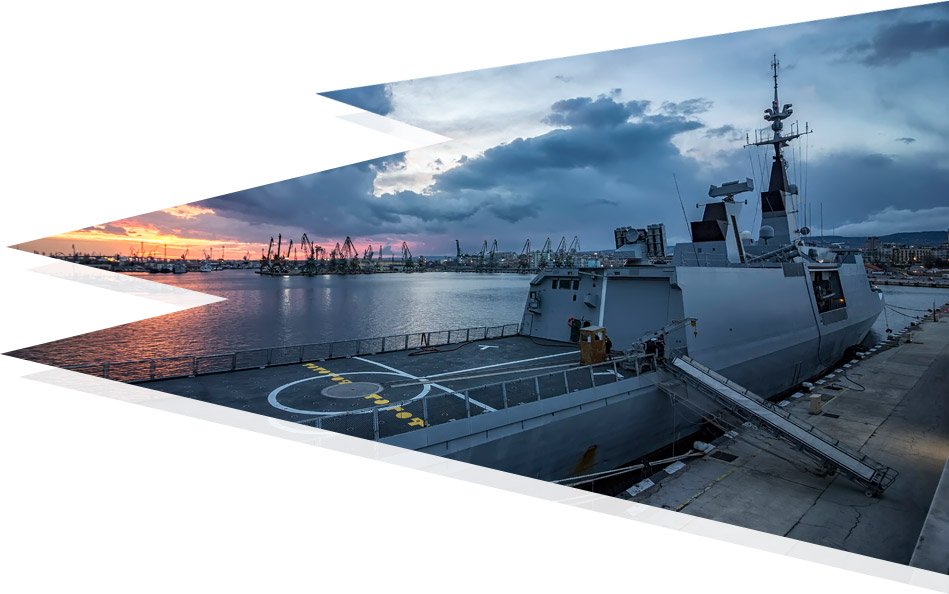Electromagnetic Environmental Effects
E3
E3
Military platforms * (ships, airplanes, helicopters, tanks, UAVs, etc.) can be very complex environments from an electromagnetic point of view. Typically they include hundreds of antennas belonging to multiple systems of all kinds (communications, navigation, radar, or weapons guidance, electronic warfare, etc.) sharing a very small space on the topside of the ship (cosite). These systems integrate powerful transmitters together with highly sensitive receivers, operating in the entire frequency range, from LF to the K-a band (10 KHz to 36 GHz).
In this complex context, transmitters can sometimes cause loss of performance, make operation impossible or even cause permanent damage (burnout) to the receivers, due to the interference caused to them, or even generate situations of potential danger to personnel. , weapons or fuels.
* We refer to military platforms because they are the ones that encompass the greatest complexity from the electromagnetic point of view, although obviously the studies carried out in this line are fully applicable to civil platforms of all kinds.


The effective management of these issues is globally called E3 (Electromagnetic Environmental Effects) and has taken on a critical role in the early stages of designing a modern military platform.
Within E3 are fundamental disciplines such as: electromagnetic compatibility (EMC), electromagnetic interference (EMI) and hazardous radiation (RADHAZ), both for personnel (HERP), as well as for weapons (HERO) and fuels (HERF).
The SC7-B team of professors / researchers from the University of Vigo (UV), in cooperation with the Computational Electromagnetism (CEM) team from the University of Extremadura (UEx), an interuniversity UV-UEx research group that we will hereinafter refer to as a group EM3W has been collaborating for many years with the Spanish Navy, Navantia, Indra and other national and foreign organizations and companies, carrying out electromagnetic simulations of E3, radar and electronic warfare problems on board ships and other complex platforms (airplanes, helicopters, tanks). combat, etc.).
This team has been growing over the last 25 years, acquiring experience, knowledge, infrastructures and its own simulation tools that have led it to be today in a leading position worldwide when it comes to tackling electromagnetic simulation problems in the domains of E3 (EMC, EMI, EMR or RADHAZ), radar and electronic warfare.

Therefore, it can be ensured that there is currently no company or body on the market that offers the possibility of hiring the services of a team with the knowledge, experience and resources (both software and simulation infrastructures and experience) similar to those offered by the EM3W unit, in the field of electromagnetic simulation of systems on board of complex real platforms.
Precisely, the complexity of this type of work and the great competitiveness based on the quality of the results offered, caused an almost exponential increase in the demand for studies in E3, which motivated the Universities of Vigo and Extremadura to create a spin off, EM3Works, to exploit these capabilities.
